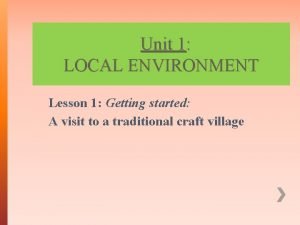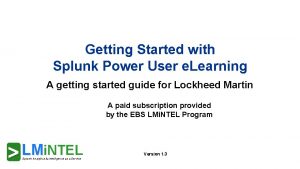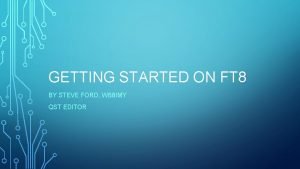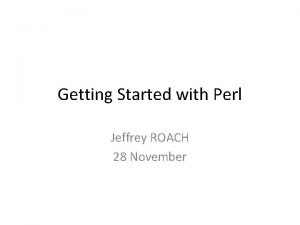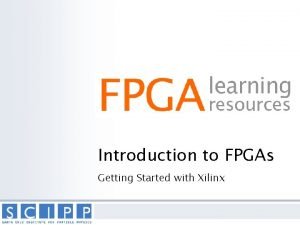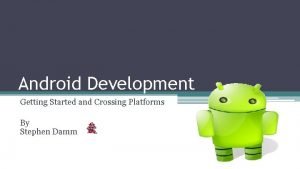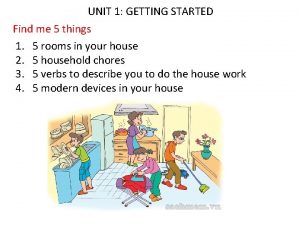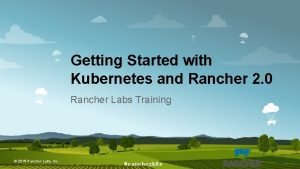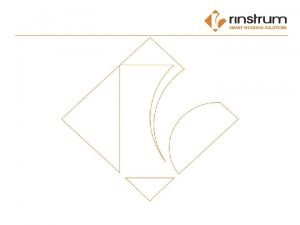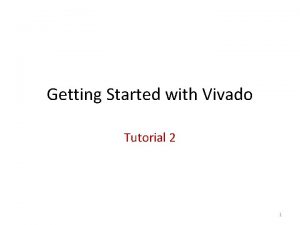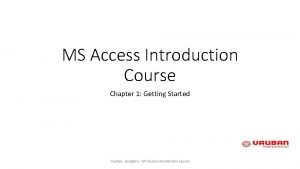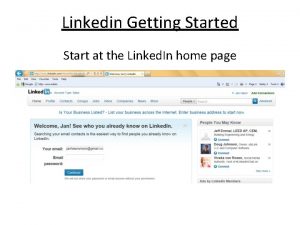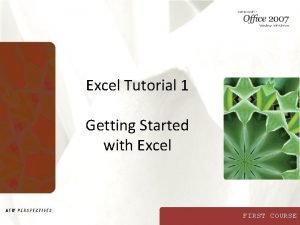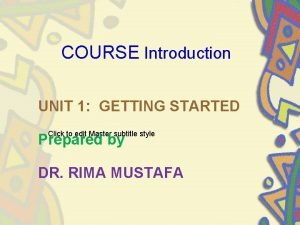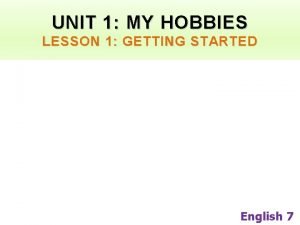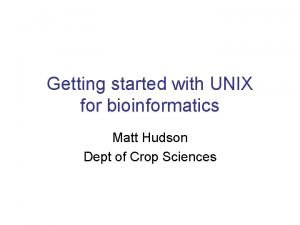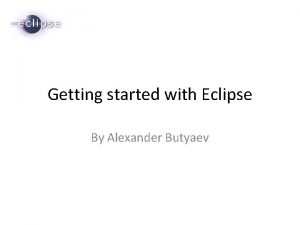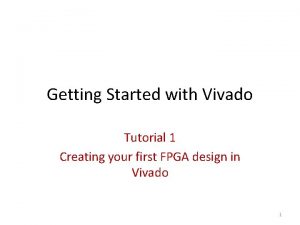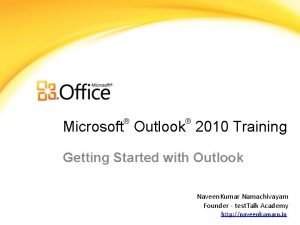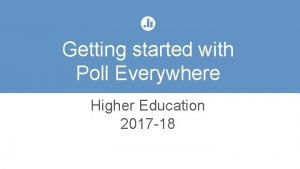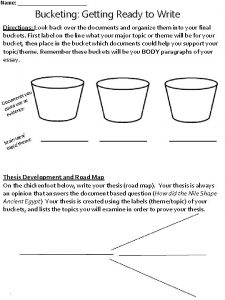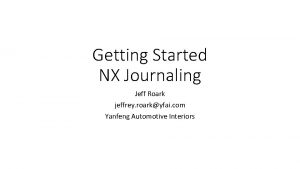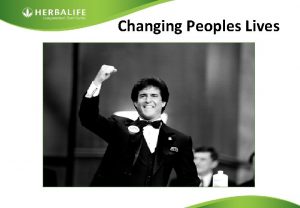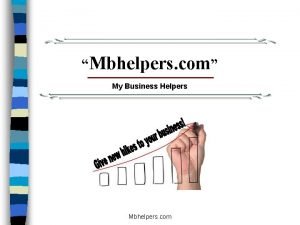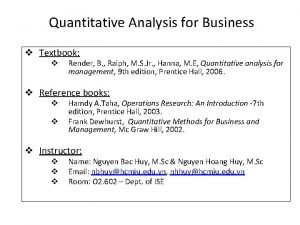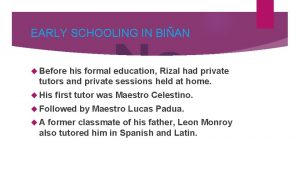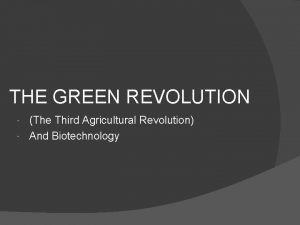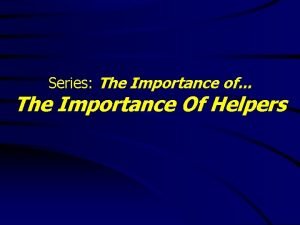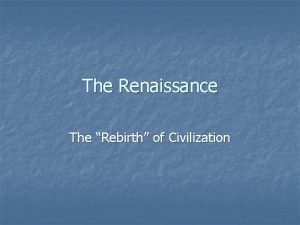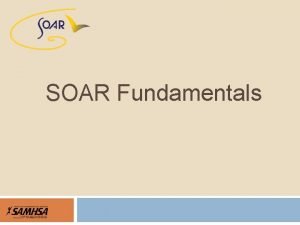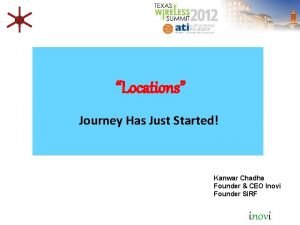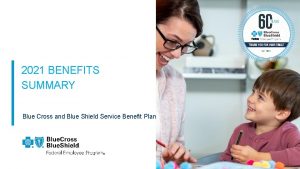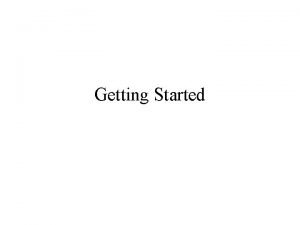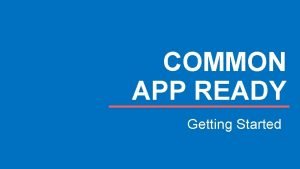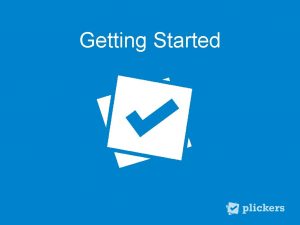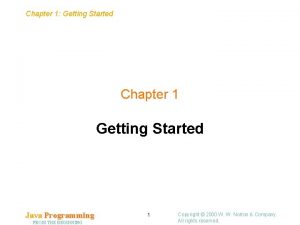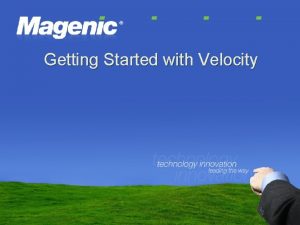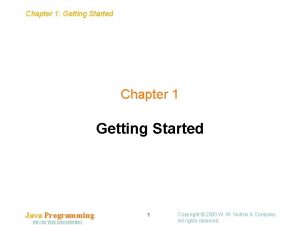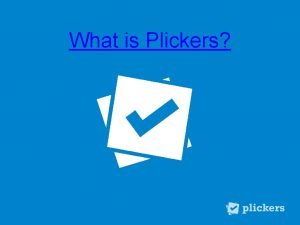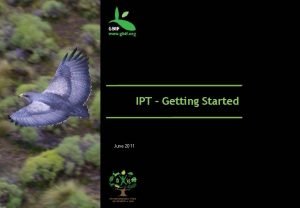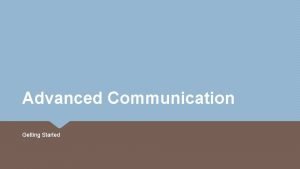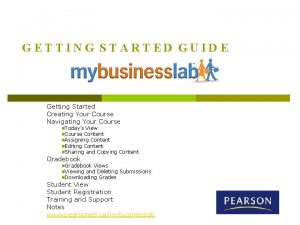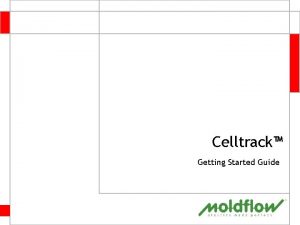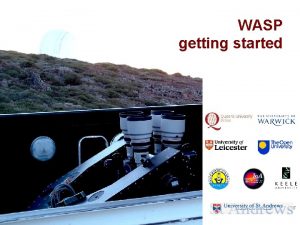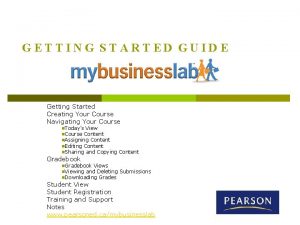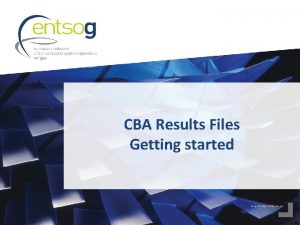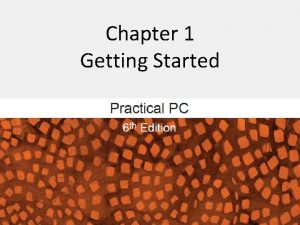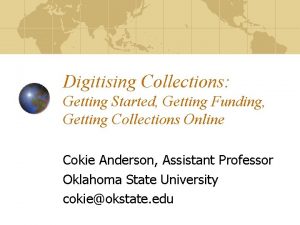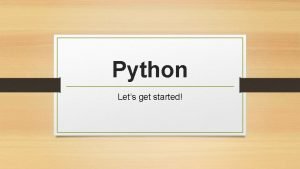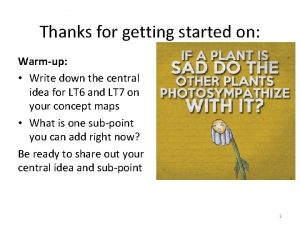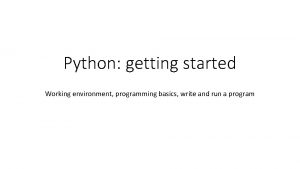WRITE 18 Getting Started 1 18 Getting Started












































- Slides: 44

WRITE 18 Getting Started 1

18 Getting Started Learning Outcomes LO 1 Understand academic research. LO 2&3 Initiate the process and develop a plan. LO 4 Explore possible resources and sites. LO 5&6 Conduct searches and evaluate sources. LO 7 Create a working bibliography. LO 8 Review note taking. 18 Getting Started 2 LO 9 Summarize, paraphrase,

LO 1 Understand academic research. Take ownership of each research project by exploring a topic or an angle that truly interests you and compels you to get started. Your main goal is to become thoroughly knowledgeable about your topic and share your findings in a thoughtful way. Your instructors, peers, research paper and the academic community a fairly long essay (5– 15 pages), complete in general will be your main with thesis statement, audience. The expected voice supporting evidence, in most research projects is integrated sources, and careful documentation formal or semiformal. 18 Getting Started 3

RESEARCH INVOLVES MANY STEPS. A Research Flowchart 18 Getting Started 4

LO 2 Initiate the process. UNDERSTAND THE ASSIGNMENT. The first important step in a research project is to thoroughly review the assignment. § Take notes about it. § Record key words, options, restrictions, and requirements. § Write down any questions you still have about the project, find answers, and proceed. 18 Getting Started 5

LO 2 Initiate the process. SELECT A TOPIC. Your goal at the outset of a research project is to find your “true subject, ” an appropriate topic you sincerely want to write about. Making It Manageable A topic is “manageable” when you can learn about it in a reasonable amount of time. General Subject Area of Interest Manageable Topic urban social problems increase in homeless families the homeless 18 Getting Started 6

LO 2 Initiate the process. BUILD RESEARCH QUESTIONS. Generating research questions helps you find meaningful information and ideas about your topic. Needing to Know § List questions about your topic to discover what you need to know about it. § List until you land on the main question you want to answer. § Brainstorm supporting questions that you must research in order to adequately answer the main question. 18 Getting Started 7

LO 2 Initiate the process. BUILD RESEARCH QUESTIONS. Needing to Know 18 Getting Started 8

LO 2 Initiate the process. BUILD RESEARCH QUESTIONS. Needing to Main Question Checklist Know ____ I� s the question too narrow, too broad, or just about right for a research paper? ____ � Is the question too easy or too hard to answer? ____ � Am I committed to answering this question? Does it interest me? ____ � Will I be able to find enough information about it within a reasonable amount of time? ____ � Will the question and answers interest the reader? 18 Getting Started 9

LO 2 Initiate the process. DEVELOP A WORKING THESIS. Quick Guide Thesis Working Formula: a limited topic + a tentative claim, statement, or hypothesis = a working thesis Sample: Hybrid-electric cars offer consumers a reasonable alternative to gas-only cars. working thesis preliminary answer to your main research question, the focus of your research 18 Getting Started 10

LO 2 Initiate the process. DEVELOP A WORKING THESIS. Quick Guide Working Thesis Checklist ____ Does my working thesis focus on a single, limited topic? ____ Is it stated clearly and directly? ____ Does it provide a preliminary answer to my main research question? ____ Do I have access to information that supports it? ____ Does my working thesis meet the requirements of the assignment? 18 Getting Started 11

LO 3 Develop a research plan. As you develop your research plan, consider what you already know about your topic. Then you can decide what you still need to find out. CHOOSE RESEARCH METHODS. § Do you need more background information? § Is primary research a possibility? § What other types of research are you interested in? 18 Getting Started 12

LO 3 Develop a research plan. CHOOSE RESEARCH METHODS. Background Research § Use the Library of Congress subject headings to find keywords for searching the library catalog, periodical databases, and the Internet. § Conduct a preliminary search of the library catalog, journal databases, and the Internet to confirm that strong resources on your topic exist. § Use specialized reference works to find background information, definitions, facts, and statistics. 18 Getting Started 13

LO 3 Develop a research plan. CHOOSE RESEARCH METHODS. Primary Research Primary research is firsthand research in which you carry out interviews, observe the topic in action, and so on. § Use interviews and surveys to get key information from experts and others. § Conduct observations or experiments to obtain hard data. § Analyze original documents or artifacts. 18 Getting Started 14

LO 3 Develop a research plan. CHOOSE RESEARCH METHODS. Library Research Search for important library resources with the help of a librarian or research specialist. § Use scholarly books to get in-depth, reliable material. § Refer to periodical articles to get current, reliable information. § Consider other resources, such as recorded interviews, pamphlets, marketing studies, or various government publications. 18 Getting Started 15

LO 3 Develop a research plan. CHOOSE RESEARCH METHODS. Internet Research The Internet serves as an incredible resource that you can access at your fingertips. § Use tools, such as search engines and subject guides, that will lead you to quality resources. § Select reputable Web sites that librarians, instructors, or other experts recommend. § Test Web sites for reliability. 18 Getting Started 16

LO 3 Develop a research plan. Sketch out tentative deadlines for completing each phase of your work: getting started, conducting research, drafting, and so on. Generally, you should spend about half your time on research and planning and half on writing. For some projects, you may have to formalize your planning in the form of a proposal, which shows your instructor that your plan is workable within the constraints of the assignment. 18 Getting Started 17

LO 4 Explore possible resources and sites. When researching, be sure to use a wide range of quality resources, as opposed to relying exclusively on information, substantial or not, from a few Web sites. CONSIDER INFORMATION RESOURCES. There are unlimited sources available to you. (See the table on page 211. ) CONSIDER INFORMATION SITES. Where do you go to find the resources that you need? (See the table on page 212. ) 18 Getting Started 18

LO 5 Conduct keyword searches. Keyword searching can help you find solid information in many resources. NAVIGATING THE SEARCH 1. Begin brainstorming a list of possible keywords based on your current knowledge and background reading. 2. Then consult the Library of Congress subject headings to find the keywords librarians use when classifying materials. 18 Getting Started 19

LO 5 Conduct keyword searches. Topic Tips “Used for” “Broader term” “Related term” “Narrower term” Subtopic Recommended keywords Immigrants (May Subd Geog) Here are entered works on foreign-born persons who enter a country intending to become permanent residents or citizens. This heading may be locally subdivided by names of places where immigrants settle. For works discussing emigrants from a particular place, an additional heading is assigned to designate the nationality of origin of the emigrant group and the place to which they have immigrated, e. g. , Chinese—United States: American—Foreign countries. UF Emigrants Foreign-born population Foreign population BT Persons RT Aliens NT Children of immigrants Social work with immigrants Teenage immigrants Women immigrants — Employment USE Alien labor — Housing (May Subd Geog) — — Great Britain — Legal status, laws, etc. USE Emigration and immigration law 18 Getting Started 20

LO 5 Conduct keyword searches. Employing Keyword Search Strategies To realize the best sources, employ these strategies: Keyword Strategy • Get to know the database. What material does the database contain? What time frames? What are you searching? What are the search rules? How can you narrow the search? • Use a shotgun approach. Start with the most likely keyword. • Use Boolean operators to refine your search. Combine keywords with Boolean operators. 18 Getting Started 21

LO 5 Conduct keyword searches. NAVIGATING THE SEARCH. Employing Keyword Search Strategies Quick Guide Operators Boolean Narrowing a Search and, +, not, - Expanding a Search or Specifying a Phrase quotation marks Sequencing Operations Finding Variations parentheses wild card symbols 18 Getting Started 22

LO 6 Evaluate your sources. Remember that credible sources boost your own credibility; sources that are not credible, destroy it. RATE SOURCES. Don’t automatically use sources simply because they support your opinion; conversely, don’t reject sources simply because they disagree with your perspective. Instead, base your selection of information on reliable, thoughtful criteria. 18 Getting Started 23

From Good to Bad The table is organized with “ 10” being the most reliable, and “ 0” being the most unreliable. 10 Scholarly Books and Articles 9 Trade Books and Journal Articles 8 Government Resources 7 Reviewed Official Online Documents 6 Reference Works and Textbooks 5 News and Topical Stories from Quality Sources 4 Popular Magazine Stories 3 Business and Nonprofit Publications 2 List Server Discussions, Usenet Postings, Blog Articles, Talk Radio Discussions 1 Unregulated Web Material 0 Tabloid Articles (print and Web) 18 Getting Started 24

LO 6 Evaluate your sources. TEST PRINT AND ONLINE SOURCE. . . Quick Guide Reliability Test Credible Author Is the author an expert on this topic? What are her or his credentials, and can you confirm them? Reliable Publication Has the source been published by a scholarly press, a peerreviewed professional journal, a quality trade-book publisher, or a trusted news source? Unbiased Discussion A biased source may be pushing an agenda in an unfair, unbalanced, incomplete manner. 18 Getting Started 25

Quick Guide Reliability Test Current Information Given what you need, is this source’s discussion up-to-date? Accurate Information Bad research design, poor reporting, and sloppy documentation can lead to inaccurate information. Full, Logical Support Is the discussion of the topic reasonable, balanced, and complete? Quality Writing and Design Is the source well written? Is it free of sarcasm, derogatory terms, cliches, catch phrases, mindless slogans, grammar slips, and spelling errors? Positive Relationship with Other Sources Does the source disagree with other sources? If yes, is the disagreement about the facts themselves or about how to interpret the facts? Which source seems more credible? 18 Getting Started 26

LO 6 Evaluate your sources. To evaluate visual resources, ask yourself the following types of questions: Is the graphic informative or merely decorative? Is the graphic manipulative in any way? What does it include or exclude? Is it well designed? And is it the product of a reliable source? 18 Getting Started 27

LO 7 Create a working bibliography. Compiling a working bibliography helps you track your research, develop your final bibliography, and avoid plagiarism. BUILDING A BIBLIOGRAPHY § Use note cards, a small spiral-bound notebook, or a computer for your work. § Consider using research software such as Take. Note, End. Note, working bibliography or Bookends Pro. a list of sources that you have read and/or intend to use in your research 18 Getting Started 28

LO 7 Create a working biblio. . . BUILDING A BIBLIOGRAPHY Include identifying information. Working Bibliography Entries Books: author, title and subtitle, publication details (place, publisher, date), call number Periodicals: author, article title, journal name, publication information (volume, number, date), page numbers, method of access (stacks, current periodical, database) Online sources: author (if available), document title, site sponsor, database name, publication or posting date, access date, other publication information, URL Primary or field research: date conducted, name and/or descriptive title of person interviewed, place observed, survey conducted, document analyzed 18 Getting Started 29

LO 8 Review note taking. A good note-taking system should help you § work efficiently, § glean key information from sources, § engage sources critically and reflectively, and § record quotations and paraphrases. SELECT A SYSTEM. When taking notes, think carefully about the information that you record. Each idea should clearly relate to or enhance your understanding of the topic. Choose one of the four note-taking systems listed that works best for your project. 18 Getting Started 30

LO 8 Review note taking. SELECT A SYSTEM. System 1: Paper or electronic note cards. . . 1. Use one set of cards for your bibliography. 2. On a second set of cards, take notes on sources: • Record one point from one source per card. • Clarify the source. • Provide a topic or heading. • Label the note as a summary, paraphrase, or quotation of the original. • Distinguish between the source’s information and your own thoughts. 18 Getting Started 31

LO 8 Review note taking. SELECT A SYSTEM. Slug Quotation Page Number Comments Source System 1: Paper or electronic note cards. . . PROBLEMS WITH INTERNAL-COMBUSTION CARS “In one year, the average gas-powered car produces five tons of carbon dioxide, which as it slowly builds up in the atmosphere causes global warming. ” (p. 43) —helpful fact about the extent of pollution caused by the traditional i-c engine —How does this number compare with what a hybrid produces? #7 18 Getting Started 32

LO 8 Review note taking. SELECT A SYSTEM. System 2: Copy (or save) and annotate. . . 1. Photocopy, print, or save important sources. 2. As needed, add identifying information on the copy—author, publication details, and date. 3. As you read, mark up the copy and highlight key statements. In the margins or digital file, record your ideas: • Ask questions. • Make connections. • Add asides. • Define terms. 18 Getting Started 33 • Create a marginal index.

LO 8 Review note taking. SELECT A SYSTEM. System 3: The computer notebook or. . . 1. Establish a central location for your notes— a notebook, a file folder, a binder, etc. 2. Take notes one source at a time. Number your note pages. 3. Using your initials, distinguish your own thoughts from source material. 4. Use codes in your notes to identify which information in the notes relates to which topic in your outline. Then, under each topic in the outline, write the page number in your notes where that information is recorded. 18 Getting Started 34

LO 8 Review note taking. SELECT A SYSTEM. System 4: The double-entry notebook. . . Using a notebook or the columns feature of your word-processing program, do the following: 1. Divide pages vertically. 2. In the left column, record bibliographic information and take notes on sources. 3. In the right column, write your responses. Think about what the source is saying, why the point is important, whether you agree with it, and how the point relates to other ideas and other sources. 18 Getting Started 35

LO 8 Review note taking. SELECT A SYSTEM. System 4: The double-entry notebook. . . Bibliographic Info and Notes Responses Cudworth, Erika. Environment and Society. Routledge Introductions to Environment Series. London and New York: Routledge, 2003. Ch. 6 “Society, Culture and Nature—Human Relations with Animals” Chapter looks at how. . . I’ve actually had a fair bit of personal experience with animals—the horses, ducks, dogs, and cats on our hobby farm. Will this chapter make trouble for my thinking? Yes, what really are the connections and differences between people and. . . 18 Getting Started 36

LO 9 Summarize, paraphrase, and quote. As you work with sources, decide what to put in your notes and how to record it—as a summary, a paraphrase, or a quotation. The passage on the next slide comes from an article on GM’s development of fuel-cell technology. Note how the researchers summarize, paraphrase, and quote material. summarize to condense in your own words the main points in a passage paraphrase to put a whole passage in your own words quotation a word-for-word statement or passage from an original source 18 Getting Started 37

When Karl Benz rolled his Patent Motorcar out of the barn in 1886, he literally set the wheels of change in motion. The advent of the automobile led to dramatic alterations in people’s way of life as well as the global economy—transformations that no one expected at the time. The ever increasing availability of economical personal transportation remade the world into a more accessible place while spawning a complex industrial infrastructure that shaped modern society. Now another revolution could be sparked by automotive technology: one fueled by hydrogen rather than petroleum. Fuel cells—which cleave hydrogen atoms into protons and electrons that drive electric motors while emitting nothing worse than water vapor—could make the automobile much more environmentally friendly. Not only could cars become cleaner, they could also become safer, more comfortable, more personalized—and even perhaps less expensive. Further, these fuel-cell vehicles could be instrumental in motivating a shift toward a “greener” energy economy based on hydrogen. As that occurs, energy use and production could change significantly. Thus, hydrogen fuel-cell cars and trucks could help ensure a future in which personal mobility—the freedom to travel independently—could be sustained indefinitely, without compromising the environment or depleting the earth’s natural resources. A confluence of factors makes the big change seem increasingly likely. For one, the petroleum-fueled internal-combustion engine (ICE), as highly refined, reliable, and economical as it is, is finally reaching its limits. Despite steady improvements, today’s ICE vehicles are only 20 to 25 percent efficient in converting the energy content of fuels into drive-wheel power. And although the U. S. auto industry has cut exhaust emissions substantially since the unregulated 1960 s—hydrocarbons dropped by 99 percent, carbon monoxide by 96 percent, and nitrogen oxides by 95 percent—the continued production of carbon dioxide causes concern because of its potential to change the planet’s climate. LO 9 Summarize, paraphrase, and quote. Source Passage 18 Getting Started 38

LO 9 Summarize, paraphrase, and quote. SUMMARIZE. Summarize when the source provides relevant ideas and information on your topic. 1. Reread the passage, jotting down a few key words. 2. State the main point in your own words. Add key supporting points, leaving out examples, details, and long explanations. 3. Check your summary against the original, making sure that you use quotation marks around any exact phrases you borrow. 18 Getting Started 39

LO 9 Summarize, paraphrase, and quote. SUMMARIZE. Sample Summary While the introduction of the car in the late nineteenth century has led to dramatic changes in society and world economics, another dramatic change is now taking place in the shift from gas engines to hydrogen technologies. Fuel cells may make the car “greener, ” and perhaps even safer, cheaper, and more comfortable. These automotive changes will affect the energy industry by making it more environmentally friendly; as a result, people will continue to enjoy mobility while transportation moves to renewable energy. One factor leading to this technological shift is that the internal-combustion engine has reached the limits of its efficiency, potential, and development—while remaining problematic with respect to emissions, climate change, and health. 18 Getting Started 40

LO 9 Summarize, paraphrase, and quote. PARAPHRASE. Paraphrase key points, explanations, or arguments that are useful to your project. 1. Quickly review the entire passage for a sense of the whole, and then reread it sentence by sentence. • State the ideas in your own words. • Edit for clarity, but don’t change the meaning. • Put directly borrowed phrases in quotation marks. 2. Check your paraphrase against the original for accurate tone and meaning. 18 Getting Started 41

LO 9 Summarize, paraphrase, and quote. PARAPHRASE. Sample Paraphrase Automobile technology may be delivering another radical economic and social change through the shift from gasoline to hydrogen fuel. By breaking hydrogen into protons and electrons so that the electrons run an electric motor with water vapor as the only by-product, fuel cells could make the car a “green” machine. But this technology could also increase the automobile’s safety, comfort, personal tailoring, and affordability. Moreover, this shift to fuel-cell engines in automobiles could lead to dramatic environmentally friendly changes in the broader energy industry, an industry that will be tied to hydrogen rather than to fossil fuels. The result of this shift will be radical changes in the way we use and produce energy. In other words, the shift to clean technology and hydrogen-powered vehicles could maintain society’s valued mobility while preserving the environment and earth’s natural resources. 18 Getting Started 42

LO 9 Summarize, paraphrase, and quote. QUOTE. Quote nuggets only—statements that are well phrased or authoritative. 1. Note the quotation’s context—how it fits in the author’s discussion. 2. Copy the passage word for word, enclosing it in quotation marks and checking its accuracy. 3. If you omit words, note that omission with an ellipsis. If you change any word for grammatical reasons, enclose it in brackets. 18 Getting Started 43

LO 9 Summarize, paraphrase, and quote. QUOTE. Sample Quotations This sentence captures the authors’ main claim about the benefits and future of fuel-cell technology. “[H]ydrogen fuel-cell cars and trucks could help ensure a future in which personal mobility. . . could be sustained indefinitely, without compromising the environment or depleting the earth’s natural resources. ” This quotation offers a well-phrased statement about the essential problem. “[T]he petroleum-fueled internal-combustion engine (ICE), as highly refined, reliable, and economical as it is, is finally reaching its limits. ” 18 Getting Started 44
 The secret of getting ahead is getting started
The secret of getting ahead is getting started Local environment getting started
Local environment getting started Mathematica getting started
Mathematica getting started Splunk free training
Splunk free training Getting started with ft8
Getting started with ft8 Perl getting started
Perl getting started Counter code
Counter code Android development getting started
Android development getting started Find these things in unit 1
Find these things in unit 1 Rancher slack channel
Rancher slack channel English 9 unit 3 getting started
English 9 unit 3 getting started Getting started with lua
Getting started with lua Getting started with vivado
Getting started with vivado Tipos de habilidades del pensamiento
Tipos de habilidades del pensamiento Linkedin getting started
Linkedin getting started Getting started with excel
Getting started with excel Unit 1 getting started
Unit 1 getting started Unit 1 hobbies
Unit 1 hobbies Unix for bioinformatics
Unix for bioinformatics Getting started with eclipse
Getting started with eclipse Hi3ms
Hi3ms Outlook tutorial 2010
Outlook tutorial 2010 Getting started with poll everywhere
Getting started with poll everywhere Bucketing getting ready to write answer key
Bucketing getting ready to write answer key Karakteristik write through didalam write policy
Karakteristik write through didalam write policy Nx get started
Nx get started Suppose jan started up a small lemonade
Suppose jan started up a small lemonade Founder of herbal life
Founder of herbal life Who started samaritan's purse
Who started samaritan's purse When labour day started
When labour day started Village cooperative movement started in
Village cooperative movement started in Gina fox has started her own company
Gina fox has started her own company The lottery by shirley jackson vocabulary
The lottery by shirley jackson vocabulary Where did rizal started his formal schooling
Where did rizal started his formal schooling What crop started the third agricultural revolution
What crop started the third agricultural revolution When urdu hindi controversy emerged in subcontinent
When urdu hindi controversy emerged in subcontinent Importance of helpers
Importance of helpers Renaissance and rebirth
Renaissance and rebirth Who invented futsal in 1930
Who invented futsal in 1930 How to get started with soar?
How to get started with soar? Tcs maitree was started on which date
Tcs maitree was started on which date Kanwar chadha
Kanwar chadha Lets get started images
Lets get started images Fep vision providers
Fep vision providers Wheelofnames.con
Wheelofnames.con

